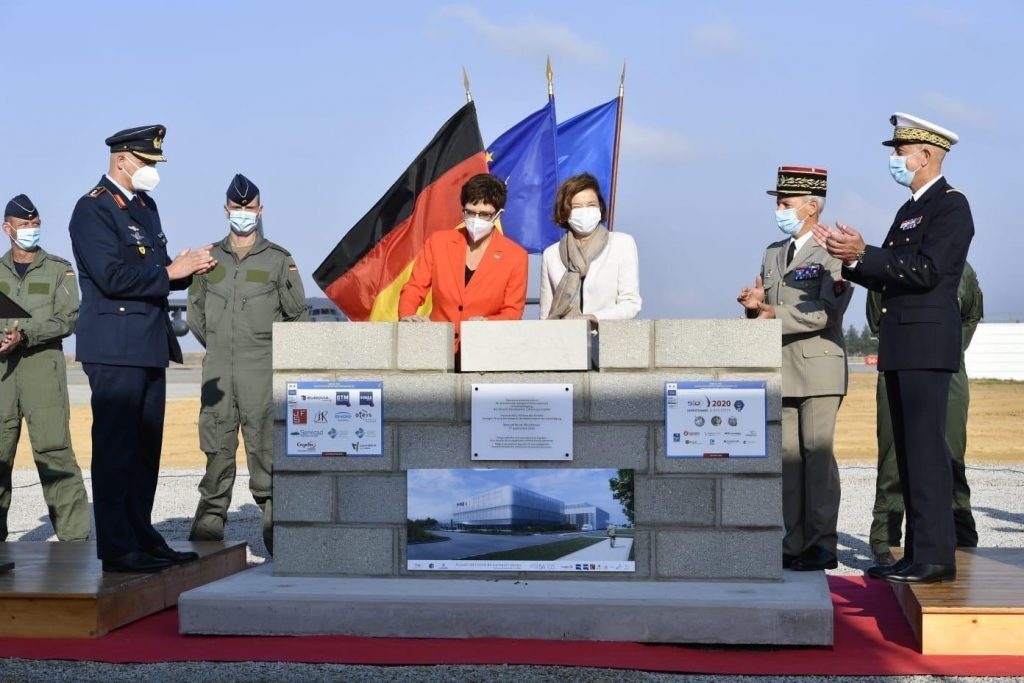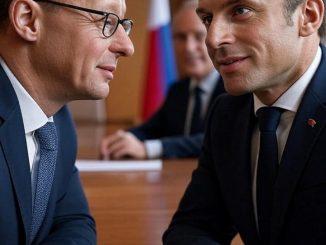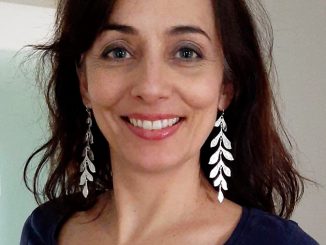A summer breeze envelops the gardens of the French Embassy in Berlin. On this 14th of July, the tricolour flag flies proudly alongside its German counterpart, symbolising a friendship forged by time and history. The air is buzzing with joyful chatter, a mix of French and German accents, as nearly a thousand guests gather to celebrate the national holiday. But tonight, there is a special scent in the Berlin air: the smell of sea spray, apples and crème fraîche. Tonight, France has the face of Normandy.

Table of Contents
At the centre of this excitement, Hervé Morin, President of the Normandy Region, smiles proudly. Standing alongside his host, the French Ambassador to Germany, His Excellency François Delattre, he is not simply a distinguished guest, but the architect of a presence that is highly significant. For the ties between Normandy and Germany go beyond mere diplomatic courtesy. It is a true story of heart and reason.

In terms of tourism, Germans, attracted by its green landscapes, beaches steeped in history and generous cuisine, have made Normandy their favourite destination in France. Economically speaking, Germany is quite simply the region’s leading partner and a major trading ally.

The visit by President Morin, accompanied by a delegation led by his two vice-presidents, is therefore not just a simple visit, but a celebration of a flourishing alliance.

The evening was a snapshot of this special relationship. Benjamin Haddad, Minister Delegate for European Affairs, was in attendance, as was Ronan Le Gleut, Senator for French citizens abroad, whose face is familiar to expatriates in Berlin.

Before joining the festivities, Hervé Morin took the time to have a warm chat with members of the Berlin branch of the Union des Français de l’Étranger (UFE). This gesture was greatly appreciated by the association, which, now in its 55th year,[1] has never ceased to promote French regional specialities. Proof of this is their success in converting Berlin’s most discerning foodies to galette-saucisse, which has become a staple of their convivial events.



In this atmosphere, the dialogue continues with the key players in this economic and cultural bridge. Hervé Morin talks with Didier Canet, a Norman entrepreneur who had the audacity and talent to set up ‘Les Délices Normands’ in the heart of Berlin and Brandenburg, proving that Camembert and Livarot have their place, and their rightful place, alongside pretzels and currywurst. This evening is not just a reception, it is a Franco-German ecosystem in full swing.
Normandy, an under-recognised powerhouse and one man’s vision
Hervé Morin’s mission in Berlin might seem easy, given how much ground has already been covered. However, his ambition is greater: to move beyond clichés to reveal the true power of Normandy and prepare for the future.[2] For while Normandy is famous for its dairy products and exceptional cheeses, it has become a multifaceted economic giant, often unknown even to the French themselves.

With the passion of someone who knows every corner of his region, Hervé Morin loves to debunk preconceived ideas. Who knows, in France or Germany, that 90% of the world’s flax, that noble and ecological fibre prized by haute couture and design, grows on Normandy soil?[3]


Who would imagine that this region, with its power stations and renewable energy sources, alone produces 26% of the energy consumed in France each year?
Far from the image of a simple agricultural region, Normandy is a land of cutting-edge industry. Building on its post-war aeronautical expertise, it has developed centres of excellence in the agri-food, petrochemical, pharmaceutical and automotive industries. Its two major ports, Le Havre and Rouen, are the economic lifeblood of the region, placing it at the crossroads of global trade, a considerable asset for both imports and exports. And what about its marine treasures? Normandy is quite simply France’s leading producer of oysters!

And then there is this jewel, this challenge to gravity and history: Mont Saint-Michel. Hervé Morin jokes about the ancestral quarrel with Brittany, but firmly reminds us: ‘The Mont is definitely Norman!’ Even the French government has recognised its value, keeping a close eye on the tourist revenue generated by this monument, which is the second most visited in France after the Eiffel Tower.


A jealously guarded treasure, just like the secrets of the omelette de la Mère Poulard, vigorously beaten in a mixing bowl as tradition dictates before being enjoyed by the world’s elite in this timeless setting.
Hervé Morin draws his determination to ensure that his region is given its rightful place from his own background. Those who know him describe him as a tenacious man with a determination typical of the people of Lorraine or even the Comté region. One anecdote sums up this character trait: as a young elected representative in Épaignes, he made a vow,[4] almost as a challenge, to one day reunite Upper and Lower Normandy. The project was far from unanimous, but he stood his ground, convinced that unity would bring strength.
Today, reunified Normandy is one of the most dynamic regions in Europe, a model of resource sharing and strategic vision.
It is this man of conviction that the Germans present this evening met in Berlin, the capital of a reunified Germany.
From memory to the future, the Franco-German thread
Hervé Morin is no stranger to his German counterparts. His time at the Ministry of Defence under the Fillon governments left a lasting mark on Franco-German cooperation.

We remember his fierce battles to save the A400M military transport aircraft programme. As the project became mired in endless delays, jeopardising the capabilities of European armed forces, particularly our own, he fought tirelessly to bring this technological flagship to fruition, ending our strategic dependence on the Americans.

He championed this vision of a more integrated European defence until the end of his term of office. He was one of the pillars of the EATC (European Air Transport Command) project,[5] which pools military transport fleets under NATO auspices. Today, the 105th Air Base in Évreux, in the heart of Normandy, is home to a binational Franco-German transport unit, the spectacular crowning achievement of this vision. In a country like Germany, which knows what the word ‘reunification’ means, his plan to bring together the Army, Air Force and Navy within the ‘Balardgone’ also resonated, foreshadowing the obvious primacy of joint operations, which has now become the norm for efficiency.
This ability to build the future is nourished by a deep respect for the past.
Germans are particularly sensitive to the work done in Normandy to transform battlefields into places of reconciliation. Hervé Morin confides his emotion when recalling 6 June 2004, when President Jacques Chirac invited Chancellor Gerhard Schröder to the D-Day commemorations.[6] Seeing the French and German flags flying side by side on the beaches of Normandy was a turning point. ‘I don’t understand why we didn’t do it sooner!’ he says. A heartfelt sentiment that has now become an unshakeable tradition.

Back in the embassy gardens, the evening is in full swing. The tables are laden with Normandy’s treasures, transforming the venue into a temple of taste. The cheese tables are stormed by an army of conquered gourmets. Calvados and its amber variations warm the conversations.
Ambassador François Delattre, whose intimate knowledge of German culture and nobility of heart have earned him unanimous esteem, observes the scene with benevolent satisfaction. This reception is much more than a social event. It is a snapshot of success: that of a region that shines, that of a living and embodied Franco-German friendship.
And as the discussions continue, an idea germinates, as if it were obvious: after the success of the ‘Délices Normands’, isn’t it time to open a real Norman inn in Berlin, a permanent place where French and Germans could celebrate this tasty understanding every day? The future certainly looks promising.
Joël-François Dumont
See also:
- ‘A Norman evening in the heart of Berlin’ — (2025-0715) —
- ‘Ein normannischer Abend im Herzen Berlins’ (2025-0715) —
- ‘Une soirée normande au cœur de Berlin’ — (2025-0715) —
[1] See ‘Fête franco-allemande 2025’ — (2025-0711) —
[2] The cultivation of flax followed the spread of Neolithic agriculture from the Fertile Crescent to Europe and the Nile Valley.
In Egypt, flax has been found in the oldest Neolithic agricultural sites in the Nile Valley, dating back to the 8th millennium, in Fayoum and Merinde. In the 13th century, its cultivation developed in Flanders, Brittany and Anjou, where flax, the main textile fibre used in the Middle Ages and the Renaissance, was used like hemp for making sheets, underwear and a wide range of clothing. The cultivation of flax was encouraged by Charlemagne… In 2024, 93,000 hectares of flax dedicated to textiles were cultivated in France, 20,000 hectares in Belgium and 3,600 in the Netherlands. France alone, mainly in Normandy and then in Hauts-de-France, accounts for 75% of the world’s flax production for textiles. Source: Wikipedia). One year later, the figure rose from 75% to 90%!
[3] See ‘J’irai revoir ma Normandie’ — 2025-0704 —
[4] On 26 November 2006, the ‘Serment d’Épaignes’ (Oath of Épaignes) was signed concerning the progress of the reunification of the two administrative regions of Lower Normandy and Upper Normandy into a single region of Normandy. Source: Wikipedia.
[5] See: ‘Le Centre Multimodal des Transports’ (The Multimodal Transport Centre) by General Philippe Carpentier — (2010-0204) —
[6] ‘Can we talk about a shared Franco-German memory in Normandy?’ See: « Franco-German reconciliation around the memory of the Second World War symbolically began on the 60th anniversary of the D-Day landings and the Battle of Normandy, on 6 June 2004, during the first Franco-German ceremony presided over by Jacques Chirac, President of the French Republic, and Gerhard Schröder, German Chancellor, at the Caen Memorial. For the first time since the war, the French and German flags flew together on 6 June. Since then, Germany has been invited every year to the Normandy D-Day commemoration ceremony. Source: Interview with Hervé Morin by Chemin de mémoire (Minist




